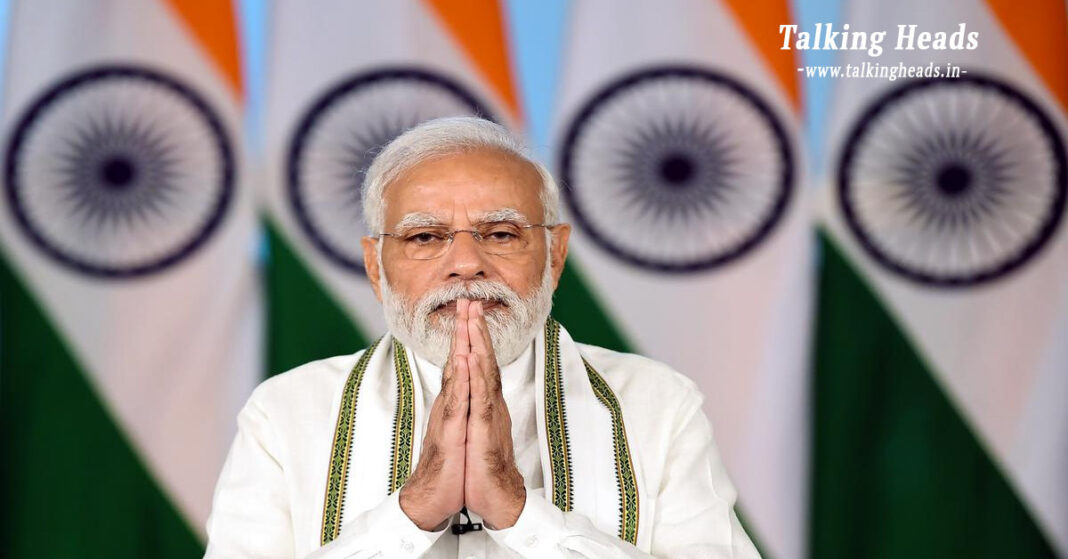New Delhi, June 1, 2025 — The long-promised rejuvenation of the Yamuna River has officially begun in Delhi, just days after the Assembly elections, with state agencies launching a large-scale cleaning drive. The initiative, promised by Prime Minister Narendra Modi and top BJP leaders during the election campaign, is now underway with advanced machinery deployed to tackle the river’s decades-old pollution problem.
Table of Contents
The Delhi government’s Flood and Irrigation Department started the cleanup
The Delhi government’s Flood and Irrigation Department started the cleanup on Sunday using trash skimmers, weed harvesters, and dredging machines. The decision followed a high-level meeting chaired by Lieutenant Governor Vinai Kumar Saxena with Chief Secretary Dharmendra and Additional Chief Secretary Navin Kumar Choudhary.
“Seven machines, including four skimmers, two weed harvesters, and a dredging utility, have been deployed, starting from ITO and Vasudev Ghat,” a senior official said. “In the first phase, the focus is on removing solid waste like floating grass, hyacinth, and plastic.”

Despite the BJP forming the next government still being a work in progress, authorities have wasted no time in initiating one of its flagship promises—reviving the Yamuna. The party had committed to building a riverfront and establishing a ‘Yamuna Kosh’ (Yamuna Fund) to support the long-term rejuvenation of the river.
The Yamuna, which flows 52 km through Delhi and touches 15 constituencies, has long symbolized the capital’s environmental crisis. Official data shows the city contributes nearly 76% of the river’s total pollution, despite accounting for just a 22-km stretch of the river’s 1,376-km course.
simultaneous cleanup operations will begin in the Najafgarh and Supplementary Drains
According to the plan, simultaneous cleanup operations will begin in the Najafgarh and Supplementary Drains—two of the biggest contributors of untreated sewage into the river. The Delhi Pollution Control Committee (DPCC) has been tasked with cracking down on industrial units discharging effluents illegally.
The project also aims to strengthen sewage treatment infrastructure. Delhi currently generates 792 million gallons of sewage daily, but only 667 MGD is treated. The rest flows directly into the river through over 20 major drains. The government will monitor existing sewage treatment plants and implement a time-bound plan to construct new ones to bridge the 400 MGD treatment shortfall.
The National Green Tribunal (NGT) had initiated a similar clean-up momentum back in 2023 by forming a High-Level Committee led by LG Saxena. However, that drive stalled after the then-AAP government sought a stay from the Supreme Court, halting implementation of the NGT’s orders. Pollution levels in the river have since worsened.
During the recent elections, the BJP heavily criticized AAP leader Arvind Kejriwal for failing to meet his 2025 promise of cleaning the Yamuna. The issue struck a chord particularly among migrant voters from Bihar and eastern Uttar Pradesh, many of whom had supported AAP in the past. BJP leader Parvesh Verma even staged a symbolic protest by dipping a Kejriwal cutout into the polluted river.
The Yamuna’s pollution has reached alarming levels—with oxygen levels dropping to near zero in parts of Delhi, turning the water black, frothy, and foul-smelling. In addition to untreated sewage and industrial discharge, illegal dumping of plastics, construction debris, and religious offerings continue to choke the river.
Despite a ban on single-use plastic, enforcement has been weak. The presence of over 1,500 unauthorized industrial units, many of which discharge hazardous waste including mercury, arsenic, and lead, has further worsened the situation.
In February this year, the NGT reprimanded the Delhi Development Authority (DDA) for its failure to remove encroachments from the river’s floodplains, despite court orders dating back more than five years. The DDA requested a three-week extension to submit a new compliance report.
Experts warn that while the new plan is ambitious, success will depend on strict enforcement, inter-departmental coordination, and public cooperation. Weekly monitoring at the highest level has been promised, but environmentalists remain cautious, pointing to past failures.
As a former Delhi chief secretary put it bluntly: “The water from Yamunotri doesn’t even make it down the mountains. What reaches Delhi is waste from Haryana’s tributaries and industrial discharge. If we don’t change that, Yamuna’s future remains bleak.”
Still, with political will now visibly aligned and machinery already at work, Delhiites may finally be witnessing the start of a serious attempt to bring the Yamuna back to life.










